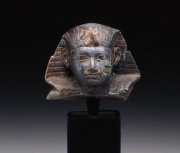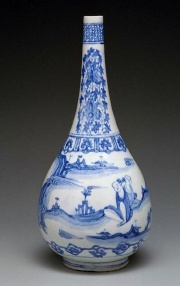Difference between revisions of "Frit"
Jump to navigation
Jump to search
(username removed) |
(username removed) |
||
| Line 2: | Line 2: | ||
== Description == | == Description == | ||
| − | A fine, glassy powder used in [http://cameo.mfa.org/materials/fullrecord.asp?name=glass glass], [http://cameo.mfa.org/materials/fullrecord.asp?name=glaze glazes], and [http://cameo.mfa.org/materials/fullrecord.asp?name=enamel | + | A fine, glassy powder used in [http://cameo.mfa.org/materials/fullrecord.asp?name=glass glass], [http://cameo.mfa.org/materials/fullrecord.asp?name=glaze glazes], and [http://cameo.mfa.org/materials/fullrecord.asp?name=enamel%2C%20inorganic enamels]. Frit is made by melting inorganic materials with [http://cameo.mfa.org/materials/fullrecord.asp?name=flux flux], [http://cameo.mfa.org/materials/fullrecord.asp?name=silica silica], and [http://cameo.mfa.org/materials/fullrecord.asp?name=glass%20colorantss colorants]. The melted material is cooled to a vitreous mass then pulverized into a fine powder. When heated, frit will turn into a glassy film. Frits are used on industrial pottery glazes to ensure color uniformity. |
[[File:1997.182-SC8165.jpg|thumb|]] | [[File:1997.182-SC8165.jpg|thumb|]] | ||
| Line 22: | Line 22: | ||
== Authority == | == Authority == | ||
| − | * | + | * Ralph Mayer, ''A Dictionary of Art Terms and Techniques'', Harper and Row Publishers, New York, 1969 (also 1945 printing) |
| − | * | + | * Richard S. Lewis, ''Hawley's Condensed Chemical Dictionary'', Van Nostrand Reinhold, New York, 10th ed., 1993 |
| − | * | + | * Robert Fournier, ''Illustrated Dictionary of Practical Pottery'', Chilton Book Company, Radnor, PA, 1992 |
| − | * | + | * Random House, ''Webster's Encyclopedic Unabridged Dictionary of the English Language'', Grammercy Book, New York, 1997 |
* ''The American Heritage Dictionary'' or ''Encarta'', via Microsoft Bookshelf 98, Microsoft Corp., 1998 | * ''The American Heritage Dictionary'' or ''Encarta'', via Microsoft Bookshelf 98, Microsoft Corp., 1998 | ||
Revision as of 07:35, 24 July 2013
Description
A fine, glassy powder used in glass, glazes, and enamels. Frit is made by melting inorganic materials with flux, silica, and colorants. The melted material is cooled to a vitreous mass then pulverized into a fine powder. When heated, frit will turn into a glassy film. Frits are used on industrial pottery glazes to ensure color uniformity.
Synonyms and Related Terms
frita (Esp.); fritte (Fr.); fritta (It.); frit (Ned.); frita (Port.)
Other Properties
Insoluble in water.
Additional Images
Authority
- Ralph Mayer, A Dictionary of Art Terms and Techniques, Harper and Row Publishers, New York, 1969 (also 1945 printing)
- Richard S. Lewis, Hawley's Condensed Chemical Dictionary, Van Nostrand Reinhold, New York, 10th ed., 1993
- Robert Fournier, Illustrated Dictionary of Practical Pottery, Chilton Book Company, Radnor, PA, 1992
- Random House, Webster's Encyclopedic Unabridged Dictionary of the English Language, Grammercy Book, New York, 1997
- The American Heritage Dictionary or Encarta, via Microsoft Bookshelf 98, Microsoft Corp., 1998


